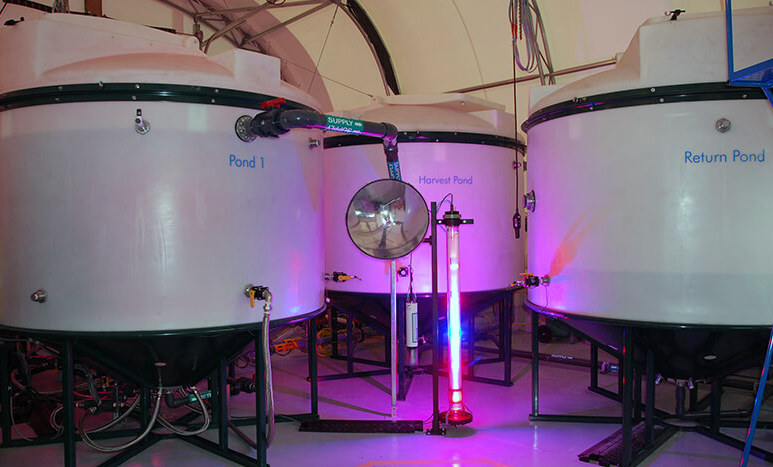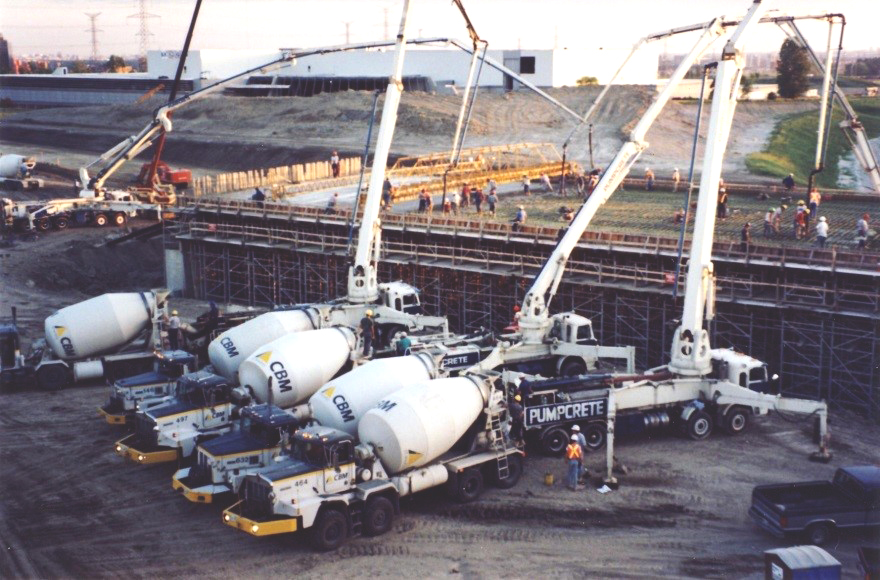
How can the construction industry do its share to reduce the emission of greenhouse gases that leading scientists connect to global warming?
In the urgent search for answers, St Marys Cement, a Votorantim Cimentos company, is taking part in a demonstration project that reveals how carbon dioxide waste can fuel the production of valuable raw materials.
The key to this remarkable process is algae — and the project, which is Canada’s first algal biorefinery demonstration pilot, was recently showcased during an open house at St Marys cement plant in St Mary’s, Ontario.
A private-public partnership seeking answers
The project represents a broad collaboration among clean tech scientists, the Canadian government and sustainability experts at St Marys Cement.
The unique technologies that drive the project come from Pond Technologies, an algae production company based in Markham, Ontario. Extensive technical support and resources also come from Canada’s National Research Council (NRC) through its Algal Carbon Conversion Program. St Marys provides the environment and raw materials to help test and advance this innovative technology.
Untreated emissions coming directly from the kiln smokestack at the St Marys cement plant are channeled into a custom photobioreactor developed by the Pond team. Fast-growing algae inside the reactor consume the gases, creating tons of biomass in the process.
“We as a species produce more carbon dioxide than anything else,” notes Steve Martin, CEO and founder of Pond Technologies. “With algal conversion technology, we now have a way of harnessing this waste product to create new resources.”

Steve Martin, founder of Pond Technologies at St Marys Cement open house
Though algae from the project are currently used for NRC studies, they may someday be used to produce valuable products — ranging from bio-fuel and animal feeds to soil amendments, pharmaceuticals and nutritional supplements.
The purpose of the $4-million, 1,500-square-foot plant is to demonstrate the technology’s overall potential — an essential step in the development of bigger solutions.
A closer look at how it works
Algae are extremely efficient consumers of greenhouse gases, taking in two tons of CO2 for every ton of biomass they produce.
Pond Technologies’ proprietary process uses advanced photo bioreactors that produce the light filled, CO2-rich conditions in which algae thrive. The light comes from custom-designed, high-intensity lights that flash continuously.
The flashing tricks the algae into thinking the days are very short, triggering rapid growth, Martin explains.
“Algae grow like any other organism, just at a tremendous rate – upwards of four to eight generations a day,” he notes. “Our process is specially designed to harness algae’s growth potential to produce high volumes of biomass.”
Small footprint, massive output
To maximize growth, Pond Technologies’ bioreactor uses uniquely designed LED lights that literally outshine the sun.
“Ordinary sunlight can only penetrate the algae medium — the water-to-algae mix — at a depth of two centimeters,” Martin explains. “By contrast, our bioreactor achieves 30 to 40 centimeters of penetration, yielding denser growth in the smallest footprint of any comparable bioreactor.”

25,000-litre photobioreactor at St Marys Cement carbon conversion project
Continuous harvesting of the algae is also essential in maximizing biomass output. In a relatively small bioreactor such as the one at St Marys, which holds 25,000 liters of algae medium, the organisms are harvested at a rate equal to their growth, “tricking them into thinking they’re in a much larger tank,” Martin says.
Scaling up: St Marys Bowmanville plant is next
“Though modest in scale, the St Marys pilot project points to solutions that may soon have major global impact,” says Bill Asselstine, Vice-President, Technical, Safety and Sustainability for Votorantim Cimentos’ North American operations.
“This collaboration with Pond Technologies and the National Research Council of Canada advances our goals of product innovation and sustainable development, while strengthening our position as a leader in the building materials sector,” says Asselstine, adding that “The project is consistent with our expressed purpose as a company — Life is made to last — which speaks to the longevity or our products and our commitment to having a positive, long-term impact on people and our planet.”

Reducers cool and equalize pressure of unfiltered gases on their way to the bioreactor.
While the current project utilizes about 1% of all CO2 produced on-site, plans to scale the technology are already underway.
The next step: a proposed larger, commercial-scale facility at St Marys Bowmanville cement plant, 45 minutes from Toronto. This project would draw a greater percentage of carbon emissions from the flue stream, testing an on-site process that would dry and pelletize the biomass produced to create animal feed.
Up to 40% of the project’s build-out may be covered as part of a $74-million clean tech innovation initiative sponsored by the Ontario Centres of Excellence (OCE).
The path to commercial viability
“The goal here is to prove commercial viability,” says Martin Vroegh, Senior Director, Greenhouse Gas Reduction Technologies for OCE. “We want to see what types of products can be developed, and specifically, whether higher value products such as neutraceuticals and pharmaceuticals can be created to support less profitable, yet equally important products such as low-carbon biofuels.”

Dried algae products
Algae used to create medications and nutritional supplements can be worth thousands of dollars per kilogram, Vroegh notes — profits that might subsidize the manufacture of other products that are currently less profitable.
“Everyone is looking for a silver-bullet solution to mankind’s production of CO2,” Vroegh says, “but the reality is that carbon abatement will come from a number of different technologies. End-of-tailpipe solutions, like the one Pond Technologies and St Marys is demonstrating here, are one part of a much bigger picture.”
Worldwide search for solutions
These innovations in algae production have garnered wide attention, carrying Pond Technologies to the semifinal stage of the $20-million Carbon XPRIZE sponsored by NRG, a leading U.S.-based integrated power company, and Canada’s Oil Sands Innovation Alliance (COSIA). The global competition is open to innovators working on breakthrough concepts that address climate change through products that convert CO2 emissions into viable new resources. The Ontario Centres of Excellence have pledged an additional $800,000 in funding to support Pond scientists as they develop technology for the next phase of the competition.
The effort reflects the urgent need for solutions — a situation that climate experts say we cannot afford to ignore. By 2040, global energy demand will grow by 37 percent and, with construction activity ramping up, carbon mitigation solutions are becoming even more crucial to the health of the planet.
Through practical, forward-looking sustainability projects now underway around the world, Votorantim Cimentos and its affiliated companies are contributing to the search for solutions toward creating a legacy that extends beyond the company’s enduring products.











 United Materials
United Materials Superior Materials
Superior Materials Prairie Materials
Prairie Materials Canada Building Materials
Canada Building Materials VC Global
VC Global